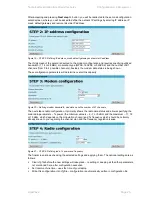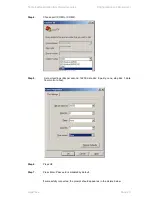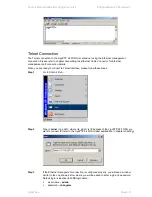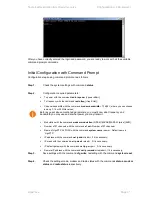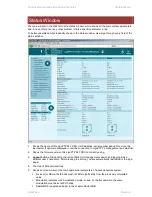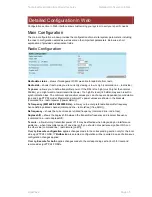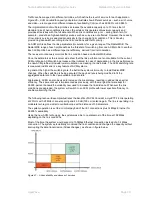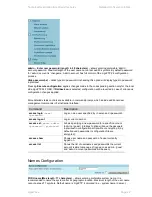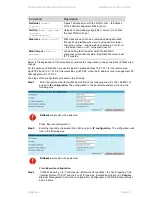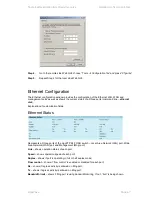
Technical Description &
Configuration Guide
Detailed
Configuration in Web
LigoWave
Page 37
ACM can be implemented together with
automatic transmit power control (ATPC)
, complimentary
features that enhance overall system performance. ATPC reduces the average transmitted power as
well as CCI and adjacent-channel interference (ACI), which is caused by extraneous power from a
signal in an adjacent channel. It also enables a more efficient and cost-effective network frequency
plan and deployment, as well as elimina
ting some of the receivers‟ “upfade” problems by changing the
transmitted power according to the link momentary conditions. The lower average Tx power also
extends the equipment‟s mean time between failures.
ATPC can be used together with ACM to control the transmitted power in any given ACM profile.
Different algorithms can be implemented to achieve maximal spectral efficiency or minimal transmitted
power using both features in combination. One implementation could target maximal spectral efficacy
by trying to reach the highest ACM profile, while the other is willing to compromise on some of the
spectral efficiency enabling CCI and ACI reduction. In any chosen algorithm, ATPC reduces the
average transmitted power, benefiting each ACM profile and any link condition.
The local LigoPTP 24 FODU receives information (each second) about Rx level from the far-end
LigoPTP 24 FODU through the service channel; depending on the received Rx level parameter, the
local LigoPTP 24 FODU adjusts the transmitter power in accordance with the algorithm shown below.
Figure 25
– ATPC algorithm
Modem Configuration
Modem data status
– shows if management CPU was able to read data from modem;




